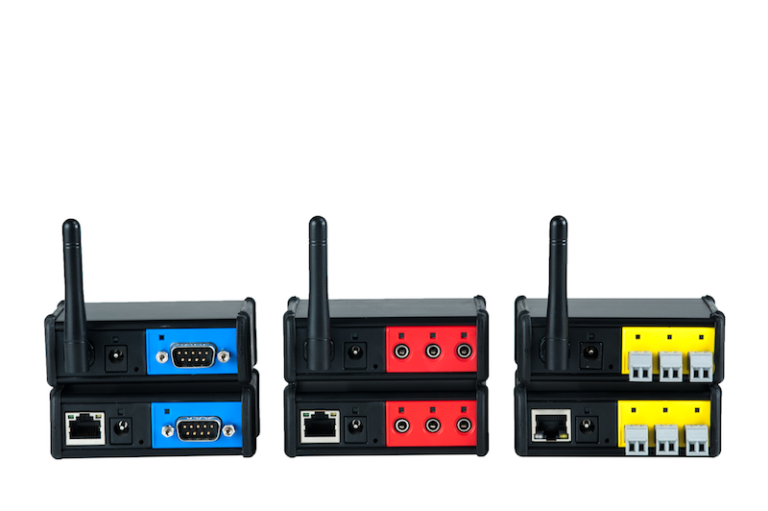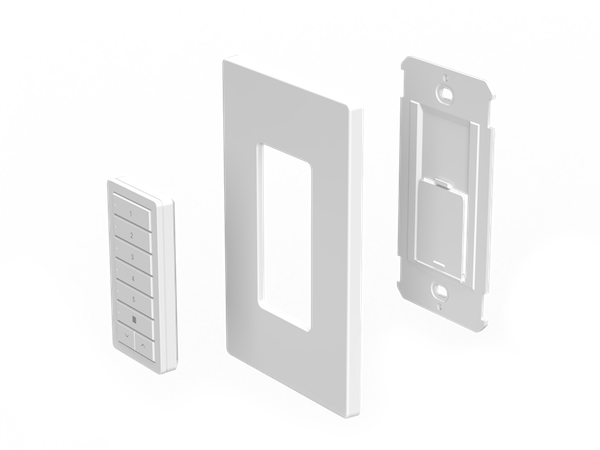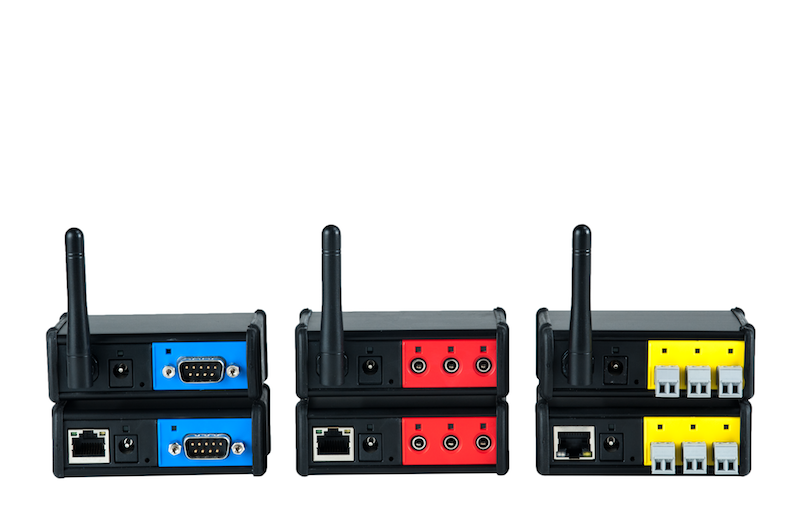Many companies are still facing supply chain issues that started three years ago with the beginning of the pandemic. China has just recently scaled back their zero-COVID policy of locking down large areas to control the spread of the disease, which has exacerbated these product availability issues.
Crestron has not been immune to these problems, having announced significant hardware delays over the past year. Even as these delays continue to shorten week after week, delays are still significant enough for some of the company’s hardware to frustrate integrators and their homeowner clients who want to retrofit a Crestron system into an existing home right now.
Fortunately, I’ve found several ways that integrators can deliver a Crestron-based smart home system to customers without being impacted by supply chain problems.

The core of a Crestron system is the Crestron processor and the custom programming developed by an integrator. That programming captures the unique requirements of the homeowners and makes living in their home simpler and more enjoyable. So, if a Crestron processor is backordered, what can be done?
VC-4 is a software product developed by Crestron as a solution for enterprise commercial customers. It allows for control of multiple classrooms, conference rooms, etc. to be centrally incorporated into a Linux server instead of the customer having to deploy individual Crestron processors in each room. A homeowner may not need a large-scale Linux server to run their home, but an integrator can load Crestron’s VC-4 software onto an appropriately sized Linux-based computer. The computer can then execute Crestron SimplWindows, Simpl+, and Simpl# code to run the homeowner’s smart home.
As a software product, VC-4 can run on an off-the-shelf Linux computer, completely eliminating the supply chain bottleneck of procuring a Crestron processor. And, for those that aren’t 100% comfortable with the thought of working with Linux and installing Crestron’s VC-4 software, Crestron provides two other alternatives. First, Crestron offers the VC-4-PC-3 where the VC-4 software comes preinstalled on a Dell computer. Second, Crestron offers a set of video training sessions dedicated to instructing people how to install the software on their own hardware.
Delivery delays have also affected Crestron’s processors that run their Crestron Home operating system. To address this issue, Crestron has announced the PC4-R — Crestron Home running on a Dell computer. It is scheduled to be available in April 2023. There are, however, two things to keep in mind.
- VC-4 requires licensing. An enterprise customer would purchase licenses for each room that they want to control. In a residential setting, a single program running in a room slot on a VC-4 could control an entire home. Or, a programmer might require several room licenses if they have divided their code up into more manageable packages that are designed to run in different programming slots on a Crestron processor. Because of this licensing, the VC-4 software needs to periodically access the Crestron cloud to validate that it is operating under the conditions it is licensed for or a special USB, Offline, licensing dongle needs to be purchased and installed in the server.
- A normal Crestron processor has IR (infrared) ports that may be used for controlling audio/video equipment. It also has relays and I/O ports. None of these are available on a general-purpose PC/Server. Fortunately, there are solutions to this problem.
With this in mind another solution is to use Crestron’s 3-Series processors either as a temporary solution (until the specified 4-Series processor is available) or as a permanent solution. Even though 3-Series processors have been discontinued for a number of years, they can handle the majority of functionality of a 4-Series processor. However, as noted by Tony Golden of Mobile Technology, a provider of integrated systems programming, design, and consulting in Atlanta, “the use of a discontinued or possibly ‘used’ component has to be carefully broached with the client.”
Golden has recommended to the dealers who he works with to approach the situation by explaining that the desired 4-Series processor (or other component) won’t be available for a while, due to component delays that are also common with many manufacturers other than Crestron. But, that the system can be completed by using “old stock” parts (3-Series processor, older models of touch panels, keypads, whatever) that they’ve been keeping on-hand for possible service replacements. The dealer can agree to replace the older components with new models when they become available.
If presented properly, the dealer could reasonably charge for this “service,” as it ultimately benefits the client to have the system functioning sooner rather than later. Another option is to offer the client a discount to keep the existing parts permanently. The beauty of this approach is that it can be presented without mentioning the dreaded words “used equipment” or “eBay”, while still not technically being deceptive.
IR Control Ports
One solution for adding IR ports to a VC-4 based control system is the Global Caché iTach IP2IR. The IP2IR provides IP control of devices that can only be controlled through IR.
The iTach IP2IR has three IR ports for connecting IR blasters and emitters (these are included with the product). Global Caché offers models that can be powered with a standalone power supply or through PoE (power over Ethernet).

The iTach IP2IR supports eight simultaneous connections, has a built-in web server for setup, and offers built-in IR learning capability. And, most important for this article’s purposes, Global Caché provides Crestron drivers for their iTach products.
A second solution for VC-4’s lack of IR ports is to use old Crestron processors (even 2-Series processors) and room boxes. Old Crestron processors can be integrated with a program running on a VC-4 through intersystem communications while old Crestron room boxes can simply be added to programming on the VC-4.

Relays and Contact Closure Input Detection
For relays and contact closure input detection, Global Caché again has an iTach product (the model IP2CC) for converting IP commands to relay contact closures. In addition, Shelly makes a variety of IP controlled relay solutions that also include the ability to detect contact closures.
The Shelly Plus 1 is an Oreo cookie-sized device with a single relay and single contact closure input. The Shelly Plus 1 is controlled over Wi-Fi and can be powered by either 12 VDC, 24 – 48 VDC, or 110 – 240 VAC. These small IoT relays can easily be installed at the location of the piece of equipment that requires a relay to control it.
The Shelly Pro 1 is a DIN rail-mountable device with a single relay and a single contact closure input. The Shelly Pro 1 is controlled over Wi-Fi or a wired Ethernet connection and can be powered by 110 – 240 VAC.
The Shelly Pro 2 offers the same features as the Shelly Pro 1, but with two channels
I have written a full driver set for control of Shelly devices from a Crestron SimplWindows program. That driver set can be downloaded from my GitHub here.
The Rest of the Smart Home
A smart home is not just made up of a control system. It also needs solutions for lighting control, climate control, control of ceiling fans, the ability to play music in rooms throughout the home, and more.
Sonos is already a common product used in Crestron systems for distribution of music throughout a home. Crestron has an IP solution for integrating the Sonos wireless music system into a Crestron-controlled home, and there is no reason not to use this with a Crestron VC-4 system.
But, Crestron’s solutions for lighting control, climate control, and ceiling fan control are also subject to supply chain issues. Fortunately, there are a wide range of off-the-shelf smart home devices that have similar functionality to many of Crestron’s products. These devices are successfully used by smart home enthusiasts around the world. The downside is that you can’t call Crestron tech support for help if there is an issue with one. On the plus side, they typically cost much less than their Crestron equivalent and can just be replaced if there is an issue. Given the lower price of these devices, when compared to their Crestron equivalent, if there is an issue, they can be replaced without that being a significant financial burden on the homeowner.
Off-the-shelf smart home devices communicate using Zigbee, Z-Wave, and Wi-Fi wireless protocols. The question then becomes how to integrate them into a Crestron system.
I have been very successful using a Hubitat Elevation hub as a gateway between a Crestron processor and the world of off-the-shelf smart home devices in my own home. The Hubitat Elevation hub has an impressive compatibility list. In addition to Alexa integration, Google Assistant Integration, and Lutron integration, the Hubitat Elevation hub is compatible with devices from Aeotec, Ecobee, GE/Jasco, Graber, Ikea, Kwikset, Leviton, Monoprice, NanoLeaf, Phillips Hue, Ring, and many, many more companies.
I wrote a detailed article on integrating a Hubitat Elevation hub with a Crestron system using a driver I wrote that can be downloaded from my GitHub. The article can be found here, and the driver I wrote can be downloaded from my GitHub here. I won’t attempt to repeat what I wrote in the prior article except to say that I have been using the Hubitat Elevation hub in my own home, and it has proved to be a very stable solution for bridging off-the-shelf smart home products with a Crestron system.
It is also important to know that when Crestron releases a Crestron Home version of the VC-4, there is a Hubitat integration driver already available for Crestron Home. William Brewer, owner of NC Systems, a Crestron CSP, has created this driver. Currently this driver supports lights, garage doors, and relays with support for additional devices planned for the future. The driver can be downloaded from the Crestron driver portal.
Shelly’s Pro line of IoT relays and dimmers can serve as a substitute for Crestron’s CLX line of lighting control modules. They are designed to be mounted on DIN rails and can either be controlled over Wi-Fi or with a wired Ethernet connection. In a recent thread on one of the Crestron Developer forums one programmer mentioned that while the Crestron CLX modules for a home were on backorder, they were very successfully using Shelly four channel relays (PRO 4PM) for lighting control.
Ceiling Fans
Ceiling fans offer their own control challenges. They are typically controlled by 300-350 MHz RF transmissions. There are solutions that work around this RF control challenge by replacing the fan’s wall mounted controller with a smart version that can be integrated with a Hubitat Elevation Hub. GE/Jasco, Leviton, Lutron, and others all make wall-mounted ceiling fan controllers that are compatible with the Hubitat Elevation hub.
Another alternative controller for ceiling fans is the Bond Bridge and Bond Bridge Pro. Bond’s bridge products are able to control ceiling fans directly with RF signals. I wrote a driver for integrating the Bond Bridge and the Bond Bridge Pro into a Crestron system. That driver can be downloaded from my GitHub here.
Smart Home Control Points
Most homeowners are comfortable controlling their smart home with an app on the smart phone and tablet. This has, for the most part, removed the necessity of installing the dedicated touch panels offered by Crestron. However, Crestron makes a variety of wired and wireless keypads that are very useful in a smart home. Until recently, it was very difficult to replicate the value to smart home control these keypads offered. Crestron keypads’ buttons can be custom engraved with text that describes the function of each button. This is very valuable for both family members and guests in a smart home. Until recently, there wasn’t a way to replicate this with inexpensive off-the-shelf products.

In addition to their bridges, Bond also offers the Sidekick keypad. This battery-powered keypad is simple to install, has a 10-year battery life, and can be custom engraved. I have also included support for them in the Crestron-Bond driver that I earlier provided a link to on my GitHub.
Downsides of Consumer-Grade Replacements
There are downsides to using consumer grade products in an integrator-installed smart home system. First of all, there is a question of how the integrator makes money selling these devices. These products are, for the most part, not available to integrators at a wholesale price so they can’t apply an appropriate mark up before offering them for sale to their customers. Second, integrators may be very uncomfortable working with residential-grade smart home devices in general where returns and service may be a challenge.
Integrators who go down this path are going to need to come up with a clear policy of how to handle devices they are not able to purchase on a wholesale basis or directly from a manufacturer. That policy would depend on their customers.
For example, an integrator might simply charge a handling fee and an understanding that any failures under warranty are not the responsibility of the integrator. Any labor to replace faulty parts during the warranty period for the part would be subject to normal labor rates. The customer is not being charged the high prices for Crestron peripheral devices that include a profit margin to cover warranty work. So, they can’t expect an integrator to be responsible. This is simply the same situation that would occur if the customer ordered the smart home peripherals themselves and asked the dealer to simply install them.
It just needs to be very clear up front what the policy is since this differs from how a system comprised completely of Crestron hardware would be handled.
Next Steps
If you want to pursue this approach to delivering a Crestron-based smart home system, I would suggest that the first thing you do is to create a prototype system and fully test it so you are comfortable with the different hardware that makes up the system. A Hubitat Elevation Hub, and possibly a Bond Bridge Pro, for example, are inexpensive investments. Crestron even offers the VC-4 software free for 90 days. Creating a mockup system in an office or installing it in an employee’s home will provide you with real-world experience working with the products and keep the people in the company from “learning on the customer’s dime.”
It will also build confidence in this approach among the staff and allow you to overcome challenges with the products
You may also find that the approach isn’t one you are comfortable with and that is much better to figure out before you have sold it to a customer.
Summary
The supply chain issues that are affecting delivery of Crestron products for projects doesn’t mean that an integrator can’t deliver a project that leverages a Crestron processor solution. Crestron’s VC-4 software with a Linux server coupled with off-the-shelf products from other companies provide IR, RS-232, and relay control of the same devices that would be controlled by a standard Crestron processor.
The integration of a Hubitat Elevation hub, and possibly a Bond bridge, with Crestron provides a way to work around supply chain issues with other Crestron hardware that may not be available for your project.
Apps running on smart phones and tablets can provide the user interface a customer needs to control most aspects of their home. And, Bond Sidekick keypads can be used to fill any gaps when an easy to reach control point is needed that can be custom engraved to make it easy for homeowners and guests to understand what each button does.
This solution won’t offer the single call to Crestron support when a problem occurs that most integrators are used to. But the lower cost of off-the-shelf smart home products allows them to be replaced whenever there is trouble without that being a financial burden on the homeowner.








